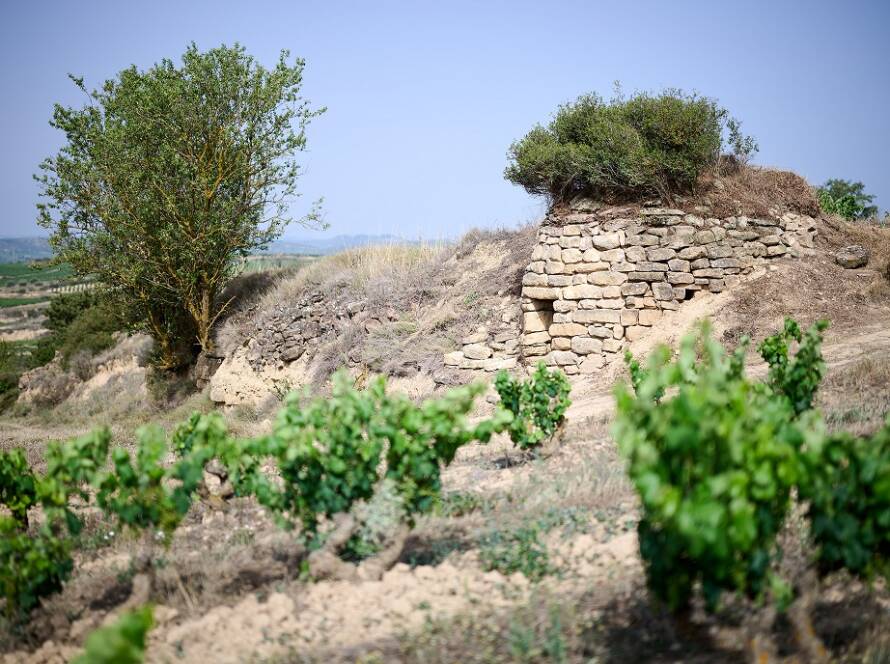Masaveu Wineries will implement regenerative viticulture at Winery Murua, in Rioja Alavesa, thus joining this viticultural model that seeks to regenerate the soil and combat climate change by increasing its capacity to capture atmospheric carbon — one of the main causes of global warming.
The project will be developed, in its first phase, on the so-called La Cruceta estate, located southeast of the town of Laguardia, covering 10 hectares with an average production of 50,000 kg. Masaveu Bodegas’ agricultural plan aims to use this plot as a “natural laboratory” to later extend this viticultural model to other estates and wineries, following the pilot project developed at Murua. “At Masaveu Bodegas, we want to learn from nature by harnessing its own tools in favor of vine cultivation,” emphasizes José Masaveu, General Director of Masaveu Wineries.
Regenerative viticulture —an agricultural model widely implemented in other parts of the world but still in its early stages in Spain— aims to adapt vine cultivation to the natural ecosystem by correcting human-induced transformations. It seeks to regenerate the soil, restore its vitality, and increase its capacity to capture atmospheric carbon, thereby helping reduce the concentration of this gas in the atmosphere —one of the main causes of global warming.To achieve this, it promotes the use of cover crops, a key element in this transformation. In this way, the soil is protected from the sun’s rays, preventing damage and the disruption of its natural fertilization system. Cover crops enhance the soil’s ability to absorb CO₂, reduce erosion and temperature, prevent degradation, and, most importantly, improve water retention in the soil.

The initiative, which will take place on the La Cruceta estate, is aimed at regenerating the soil through several sustainable actions: sheep grazing to transform vegetation into organic fertilizer; the installation of nesting boxes for birds and bats to control insect populations; and the placement of perching posts for birds of prey to help manage invasive species such as mice and rabbits. Additionally, the planting of around 150 native fruit trees and shrubs will provide shelter for beneficial fauna.The goal of these actions is to observe and understand the interactions within the vineyard ecosystem, to promote positive effects, and to address any unforeseen negative impacts. To achieve this, an initial diagnostic study of the plot, including bird and soil analyses, has been established as a baseline to monitor and evaluate the project’s evolution over time.
“The implementation of this viticultural model will allow us to better cope with droughts, increase the organic matter in the soil, enhance its water retention capacity, reintroduce trees into the vineyard landscape, promote the presence of beneficial fauna, eliminate erosion, and ultimately achieve better and higher-quality production,” explains Mathieu Barrault, winemaker at Winery Murua.
The actions carried out on the estate will respect key aspects for the company, such as the identity of Murua’s vineyard, the quality of the grapes, the viability of the company, and the efficient logistics and performance of vineyard work.
The winemaker at Winery Murua notes that several of the most prestigious wineries in France are already applying this model. “Studies indicate that more than 7 million hectares of vineyards worldwide could help combat climate change through regenerative viticulture,” he adds.

The launch of this pilot project is another step forward in the path begun in 2021 with the application for organic certification for Bodega Murua, and in the ongoing work carried out by the Masaveu Bodegas winemaking team and the rest of the staff to create an enriching and favorable ecosystem for vine cultivation.Currently, Winery Murua has 60 hectares of vineyards registered as organic, representing 75% of its total vineyard area, with the goal of reaching 100% by 2026.“The climate affects wine production, but agricultural practices also have an impact on the climate, and we are determined to take better care of our environment,” explains Barrault.
Association of Regenerative Viticulture
As part of its commitment to regenerative viticulture, Winery Murua has recently joined the Association of Regenerative Viticulture, established in November 2021 with the aim of promoting a paradigm shift in Spanish vineyards to combat climate change, regenerate soils, prevent erosion, and foster biodiversity.
Promoted by Familia Torres, Clos Mogador, Can Feixes, Jean Leon, and AgroAssessor, the association was created to serve as a meeting point for wineries interested in regenerative agriculture. This initiative led Masaveu Wineries to join, driven by the conviction that its implementation benefits the environment, the vine, and the wines they produce.
About Masaveu Wineries
The Masaveu family began investing in the wine sector in 1974, when they acquired Bodega Murua, but the family’s vineyard plantations date back to the mid-19th century, specifically in Castellar del Vallés, where the family originates and where Federico Masaveu Rivell took the first steps that a century later would be continued by his descendants.
Since then, Masaveu Wineries has grown steadily with a strong commitment to quality in the production of its wines across different DOs, embracing an ecological philosophy and utmost respect for the land, where it owns its own vineyards, allowing them to convey the unique personality of each terroir in every bottle. In this way, all of Masaveu Wineries projects across different parts and regions of the country come together under a common denominator: Murua (DOCa. Rioja), Fillaboa (DO. Rías Baixas), Pagos de Araiz (DO. Navarra), Leda (Vino de la Tierra de Castilla y León), and Valverán (Asturias).

